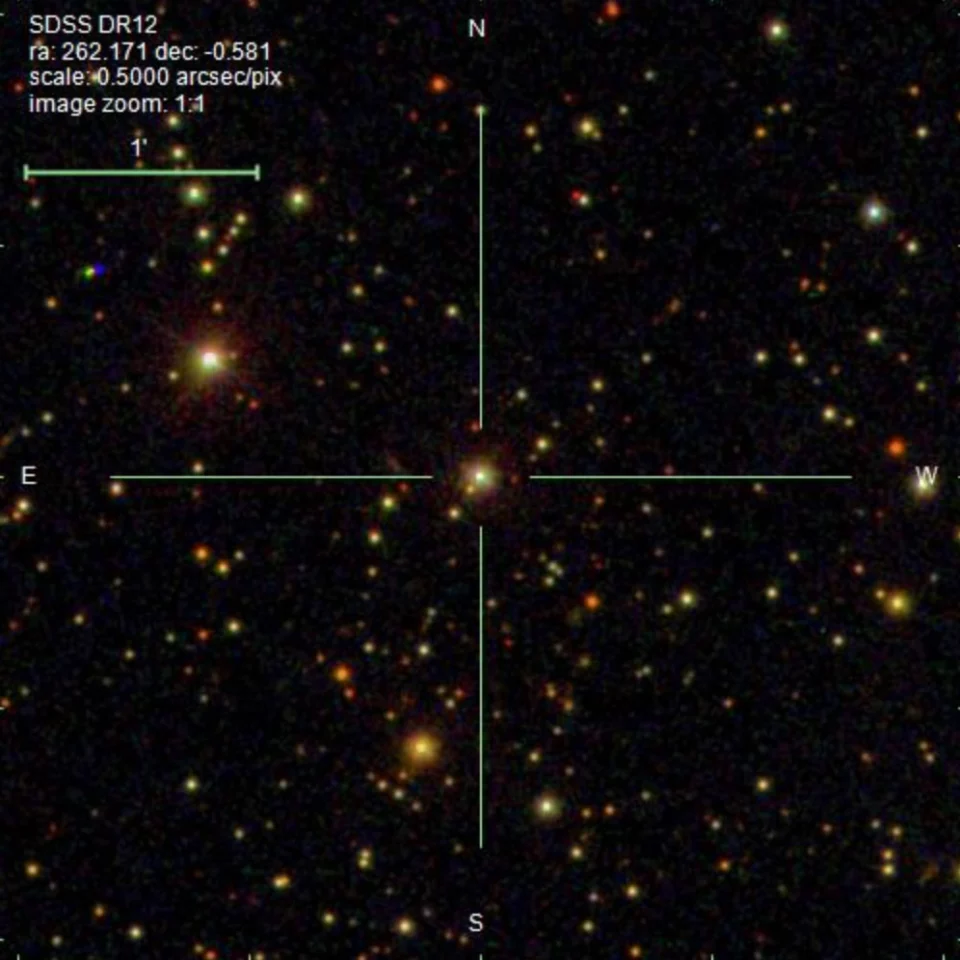Astronomers may have discovered a monster black hole that’s one of the closest to Earth known. With a mass equivalent to 12 Suns, the black hole was found to be quietly lurking “practically in our backyard,” according to the team.
Unsurprisingly for objects so dark that light itself can’t escape from them, black holes are tricky to spot among the inky darkness of space. They often make themselves known by throwing off flares of light as they chow down on dust and gas, swallow stars, or collide with each other. But it’s hard to get a gauge on how many more are lurking in the depths of space.
To investigate, astronomers on the new study examined data of almost 200,000 binary star systems, as identified by the sky-scanning Gaia mission. Among these, the team was looking for signs of stars orbiting massive, unseen objects.
“We searched for objects that were reported to have large companion masses but whose brightness could be attributed to a single visible star,” said Dr. Sukanya Chakrabarti, lead author of the study. “Thus, you have a good reason to think that the companion is dark.”
The most promising candidates were followed up with measurements of the light spectrum of the stars, using a range of instruments including the Keck Observatory in Hawaii and the Giant Magellan Telescope in Chile. If there’s a black hole there, it can be detected as its immense gravitational influence affects the spectrum of the star’s light during its orbit.

Using this method, one system in particular caught their eye – a visible star with a mass a little smaller than the Sun, orbiting something more than 12 times more massive. It completes an orbit once every 185 days.
“The pull of the black hole on the visible sun-like star can be determined from these spectroscopic measurements, which give us a line-of-sight velocity due to a Doppler shift,” said Dr. Chakrabarti. “By analyzing the line-of-sight velocities of the visible star – and this visible star is akin to our own Sun – we can infer how massive the black hole companion is, as well as the period of rotation, and how eccentric the orbit is. These spectroscopic measurements independently confirmed the Gaia solution that also indicated that this binary system is composed of a visible star that is orbiting a very massive object.”
Most notable is that this black hole is just 1,550 light-years away. That might not sound very close, but it’s a cosmic stone’s-throw away compared to most. In fact, it’s one of the closest ever discovered – and may be the closest, period.
Currently the title belongs to an object in the system V Puppis, which is about 960 light-years away, but this still hasn’t been confirmed to be a black hole. Other recent title-holders include HR 6819 and the “Unicorn”, at 1,000 and 1,120 light-years respectively, but both of these have since been reclassified as other compact objects.
Of course, there’s every chance that this new object might end up with the same fate, but further observations will help confirm its identity either way.
The research has been submitted to the Astrophysical Journal.





